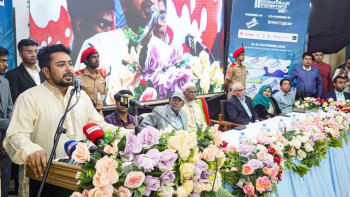Subletting surges as rents go through the roof

Mohammad Abu Eusuf, a private sector employee who lives in Dhaka's Mirpur, earns about Tk 23,000 per month. But the income is not adequate for him to manage his monthly expenses given the ongoing inflationary pressure.
And after recently getting married, Eusuf had hoped to find an affordable one-bedroom flat with a monthly rent of between Tk 6,000 and Tk 8,000.
But amid the cost-of-living crisis and a lack of affordable housing, he failed to find one and ultimately had to settle with a two-bedroom flat for Tk 14,000 per month, including utilities.
As such, Eusuf decided to sublet the spare room in order to reduce his burden.
"How else could I bear the full rent of the two-room flat?" he asked.
He pointed out that while subletting the room is providing financial relief, it comes at the cost of his family's privacy.
Ahsan Habib Sabuj, a subtenant in the Ashulia union under Dhaka, said no one prefers sharing their flats unless severely financially constrained.
He paid Tk 4,700 for his share of the Tk 8,200 house rent in December.
The 35-year-old garment worker, who lives with his wife and another woman, informed that the area is home to thousands of garment workers who share flats to cut expenses.
According to the Bangladesh Sample Vital Statistics of the Bangladesh Bureau of Statistics (BBS), more than two lakh households in the two city corporations of Dhaka were sublet in 2022.
The annual report on demographic data compiled by the state-run statistical agency showed that 70,000 of these households were sublet for the first time.
The data showed 7.64 percent of the people in Dhaka are subtenants, up by 2.73 percentage points from 2021, as people were cutting back on their expenditures to battle higher inflation, which has stayed more than 9 percent since March.
The sublets are mostly sought by limited and middle-income groups in urban areas.
The number of sublessors in the capital city rose by about 0.15 percentage points to 2.05 percent of its population at the same time.
Dhaka's population stood at 1.02 crore in 27 lakh households that year, according to the Population and Housing Census 2022.
"The rise in sublets is closely linked with the rapid urbanisation and the poverty situation in Dhaka city," said Hossain Zillur Rahman, executive chairman of the Power and Participation Research Centre.
"This is because people think sharing their houses to reduce costs is a necessary sacrifice amid the current economic climate."
Besides, poor management in the housing industry has created a huge gap between the demand and supply for affordable housing amid rapid urbanisation, he added.
The urban poverty rate in Bangladesh currently stands at 14.7 percent while it is 14.3 percent in Dhaka city, according to the Household Income and Expenditure Survey 2022.
Rahman, also a former caretaker government adviser, said despite its obvious drawbacks, subletting is becoming a new housing solution.
For example, many students and workers in urban areas used to stay at hostels or under other shared living arrangements.
Now, many families are subletting their homes to these students and workers as it reduces their costs while the subtenants get to enjoy better a living environment.
Adil Mohammed Khan, president of the Bangladesh Institute of Planners, said the elevated prices of essentials have forced lower and middle-income groups to cut down on rents.
"That is why some people are taking sublets while others are sending their families back to their village homes to manage the costs."
Khan pointed out that areas outside Dhaka are failing to generate enough employment as efforts to decentralise the country's main economic hub remain unsuccessful.
"As such, demand for affordable housing continues to rise in the capital city."
Against this backdrop, Khan said social or shared housing solutions could be an effective strategy to address the demand of lower-income people in urban centres.
"Appropriate policies, strategies and initiatives are needed to increase the supply of affordable housing."
DEMAND FOR AFFORDABLE HOUSING SQUEEZING LIVING SPACE
To cater to the rising demand for affordable housing, construction companies have started building smaller units that have lower rents. However, this comes at a cost as average bedroom sizes have decreased by 0.7 percent year-on-year in 2022 while the decline was 28 percent compared to 2020.
The reduced living space also translated into increased sharing of household amenities, with 26.6 percent of all households in the country having to share a single bathroom.
Some 31.2 percent of these households are spread across the two city corporations of Dhaka, with subletting being the primary reason for them to share their bathrooms.
Rajshahi has the highest number of households with shared bathrooms after Dhaka, accounting for 32.3 percent of the total.
Barishal has the lowest number of households with shared bathrooms, making up 10.8 percent.


 For all latest news, follow The Daily Star's Google News channel.
For all latest news, follow The Daily Star's Google News channel. 




Comments